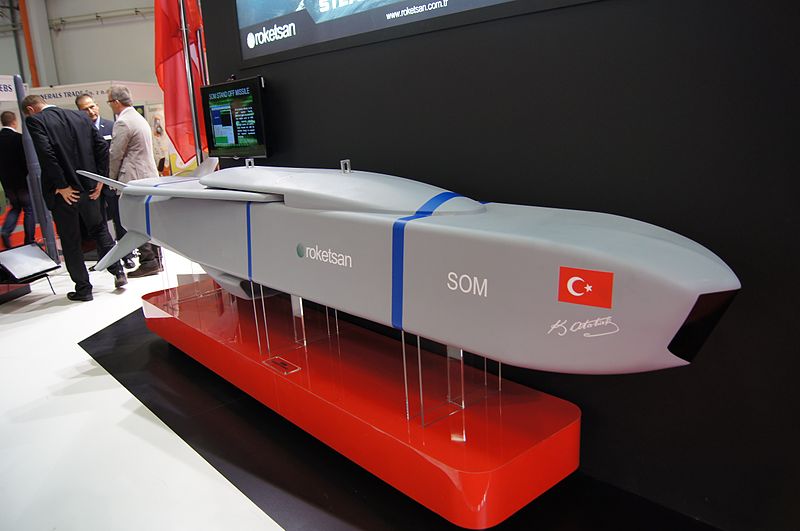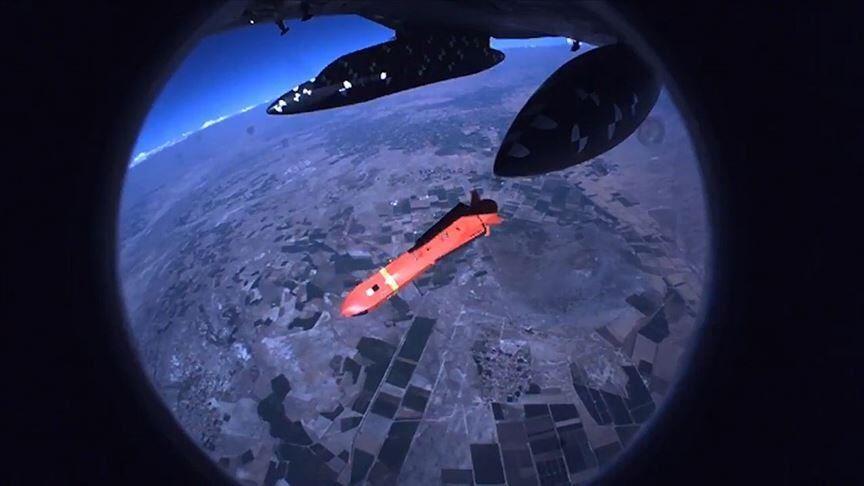Turkey has successfully test-fired its first domestically produced cruise missile with a warhead capable of penetrating a concrete bunker, according to Turkey’s industry and technology minister.
Mustafa Varank said on Twitter on Sept. 5 that the SOM-B2 missile was developed by the Defense Research and Development Institute (SAGE) of the Turkish Scientific and Technological Research Council (TÜBİTAK), a national agency playing a leading role in the development of a science and technology in Turkey.
Varank also shared a video showing the missile successfully approaching its target, penetrating a concrete bunker.
“The SOM-B2 missile successfully hit the target in the firing test,” İsmail Demir, the head of Turkey’s Defense Industries Presidency, also disclosed on Twitter, mentioning that the missile “successfully concluded” its development, ground and flight tests.
The Stand-Off Missile (SOM) is a next-generation, air-to-surface, high precision cruise missile with a turbojet engine designed to be used against heavily protected land and sea surface targets, according to the institute.
The SOM stand-off cruise missile belongs to a family of launch and leaves precision strike weapons against both land or sea targets. It uses GPS as its primary mode of guidance complemented by an advanced Inertial Navigation System and a radar-based Terrain Referenced Navigation system
With a strike range of over 250 kilometers (around 155 miles), the SOM-B2 is designed to penetrate hard concrete targets and is equipped with a dual-stage tandem penetrating warhead.

The SOM missile family, designed for use against ground and sea targets, comes in different variants including the SOM-A, SOM-B1, SOM-B2, and SOM-J.


























Leave a Reply